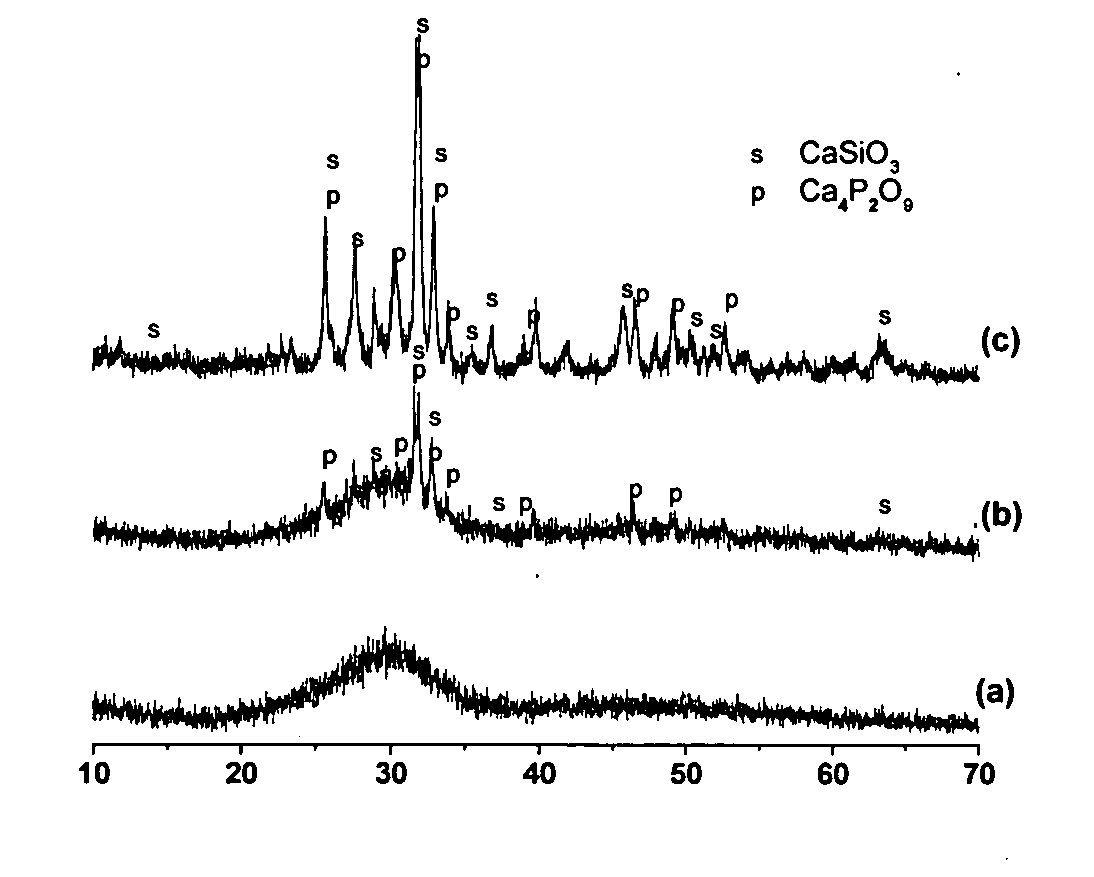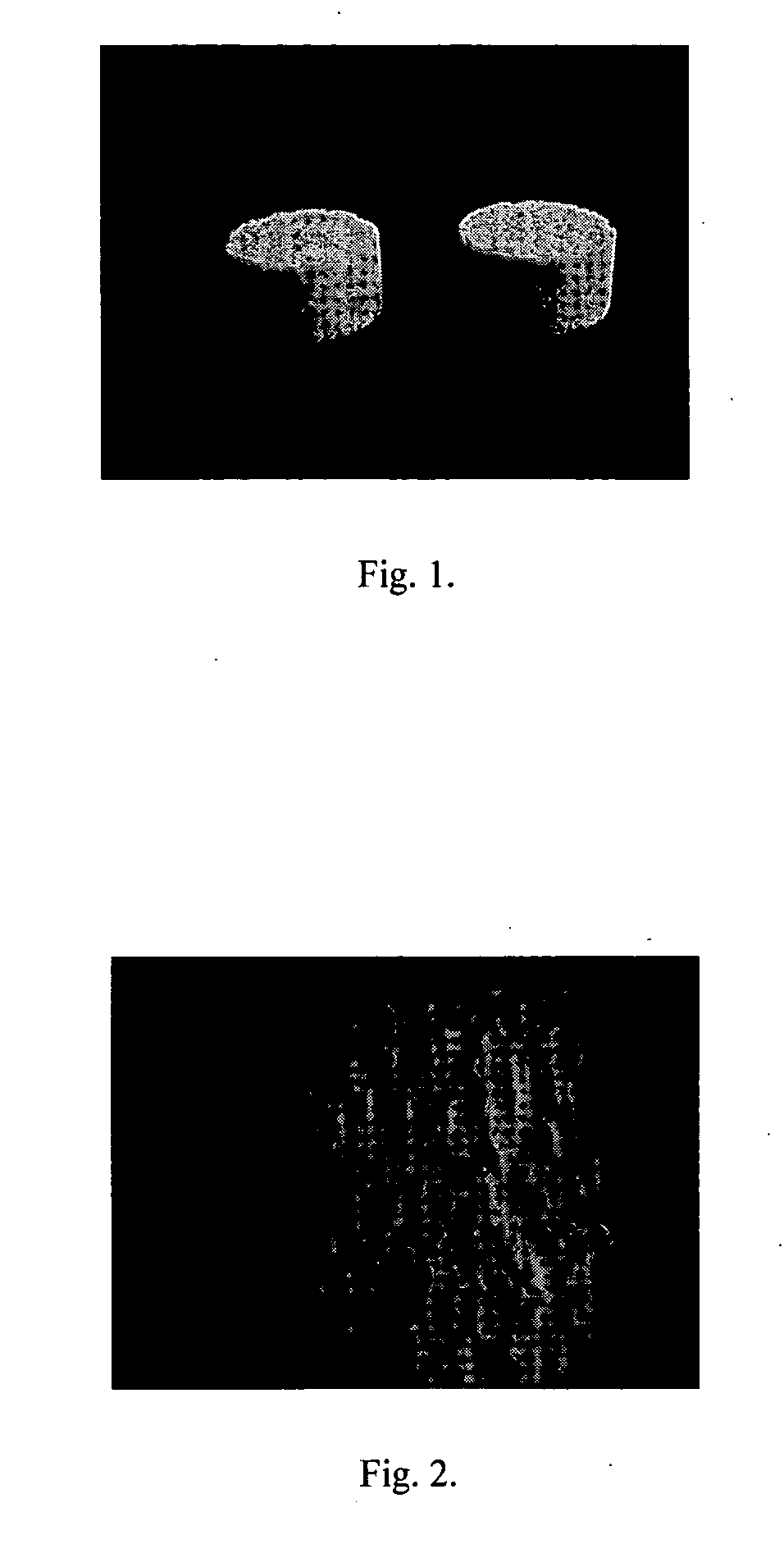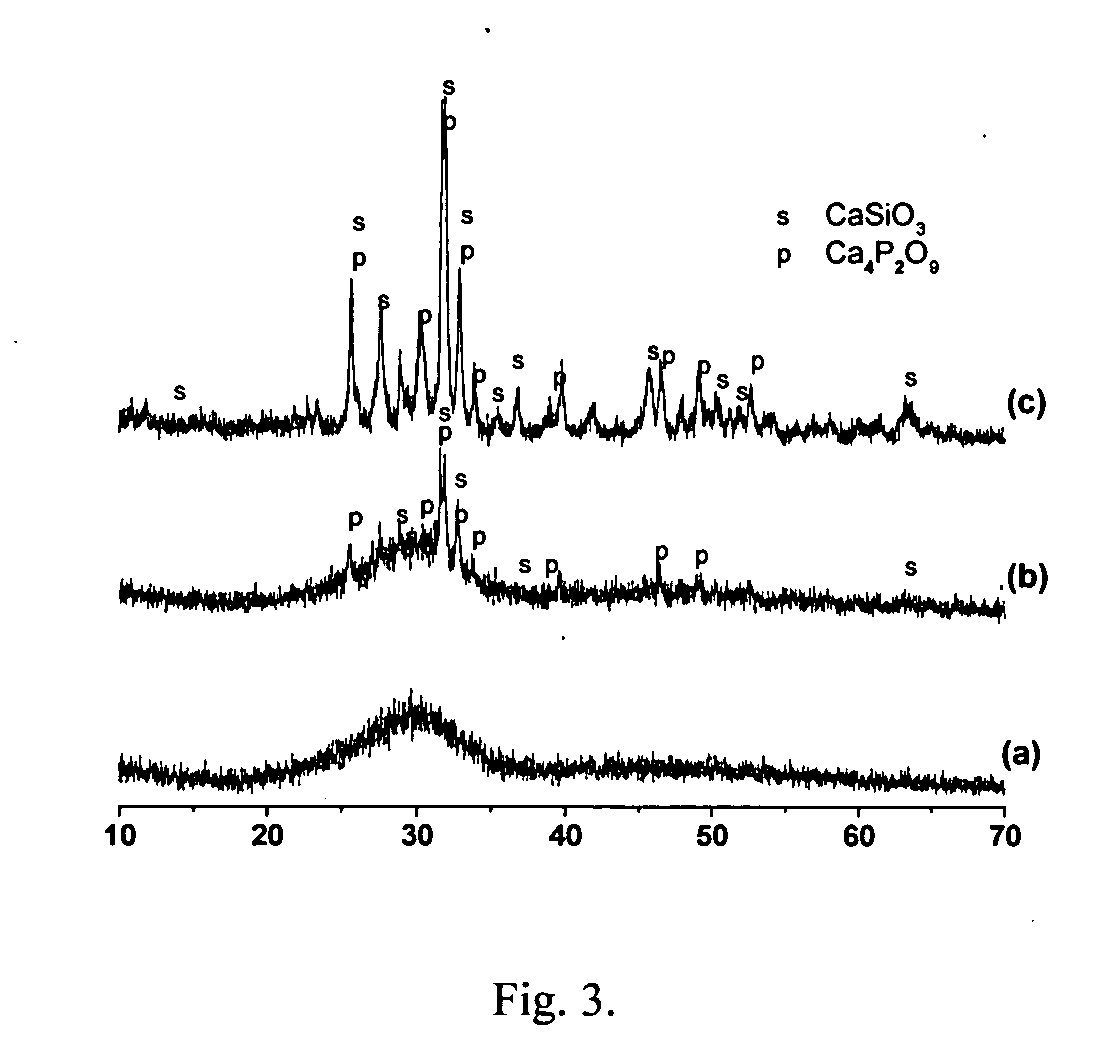Resorbable macroporous bioactive glass scaffold and method of manufacture
a bioactive glass and macroporous technology, applied in the field of resorbable macroporous bioactive glass scaffold and method of manufacture, can solve the problems of reducing resorbability/degradability, high production cost, and difficult control of the composition of finished products, and achieve excellent bioactivity, biodegradability, and controllable pore size and porosity
- Summary
- Abstract
- Description
- Claims
- Application Information
AI Technical Summary
Benefits of technology
Problems solved by technology
Method used
Image
Examples
implementation example 1
The raw materials used in this example are the same as those described above.
[0025] SiO2, Na2CO3, CaCO3 and P2O5 (all of analytical purity) are mixed proportionally, and the mixture is melted into homogenous fused masses at the temperature of 1420° C. and then cooled, crushed and sieved to obtain bioactive glass powder with a particle diameter ranging from 40-300 microns. The composition of the bioactive glass powder is expressed as CaO 24.5%, SiO2 45%, Na2O 24.5% and P2O5 6%. Next, the bioactive glass powder (150-200 microns in granularity) is mixed with the polyethylene glycol powder (200-300 microns in granularity) at a mass percent of 60:40. Polyvinyl alcohol solution (6%), which serves as the adhesive, is added and the solution is mixed. The mixture is then dry-pressed under a pressure of 14 MPa, and the pellets of the macroporous materials are stripped from the mold. The pellets are first processed at 400° C. to remove organics, and then sintered at 850° C. for 2 hours to ob...
implementation example 2
[0027] SiO2, CaCO3, Ca3 (PO4)2, MgCO3,CaF2 (all of analytical purity) are mixed proportionally, melted into a homogenous fused masses at the temperature of 1450° C., and then cooled, crushed and sieved to obtain bioactive glass powder (particle diameter ranging from 40-300 microns). The composition of the bioactive glass powder is CaO 40.5%, SiO2 39.2%, MgO 4.5%, P2O515.5% and CaF20.3%.
[0028] Next, the bioactive glass powder is blended with polyvinyl alcohol powder (300-600 microns in granularity) at a mass percent of 50:50 to obtain a solid mixture. An aqueous solution composed of 20% acrylamide, 2% N,N′-Methylene-bis-acrylamide and 8% polyacrylic acid is prepared, and 10 grams of the said solid mixture is blended with the aqueous solution at a volume percent (ratio) of 50:50, with several drops of ammonium persulfates (3% in mass percent) and several drops of N, N, N′,N′-tetramethyl ethylene diamine (3% in mass percent) added and stirred to produce a slurry with fine fluidity, wh...
implementation example 3
[0029] The raw materials and the preparation methods of the bioactive glass powder used in this example are the same as those in Implementation Example 2.
[0030] The bioactive glass powder (granularity at 150-200 microns) is blended with PEG powder (granularity at 200-300 microns) at the mass ratio of 40:60. Polyvinyl alcohol solution (concentration at 6%) is added to serve as the adhesive and mixed. This mixture is dry-pressed under a pressure of 14 MPa, and pellets of the macroporous materials are obtained by removal from the mold. The pellets are first processed at 400° C. to remove organics, and then sintered at 800° C. to obtain the said macroporous materials with a compressive strength at approx. 1.5 MPa and porosity at about 65%. After being immersed in Simulated Body Fluids for 3 days, the degradation rate of the macroporous glass material is 38% (calculated based on the mass percent of Si releasing).
PUM
| Property | Measurement | Unit |
|---|---|---|
| Temperature | aaaaa | aaaaa |
| Temperature | aaaaa | aaaaa |
| Temperature | aaaaa | aaaaa |
Abstract
Description
Claims
Application Information
 Login to View More
Login to View More - R&D
- Intellectual Property
- Life Sciences
- Materials
- Tech Scout
- Unparalleled Data Quality
- Higher Quality Content
- 60% Fewer Hallucinations
Browse by: Latest US Patents, China's latest patents, Technical Efficacy Thesaurus, Application Domain, Technology Topic, Popular Technical Reports.
© 2025 PatSnap. All rights reserved.Legal|Privacy policy|Modern Slavery Act Transparency Statement|Sitemap|About US| Contact US: help@patsnap.com



